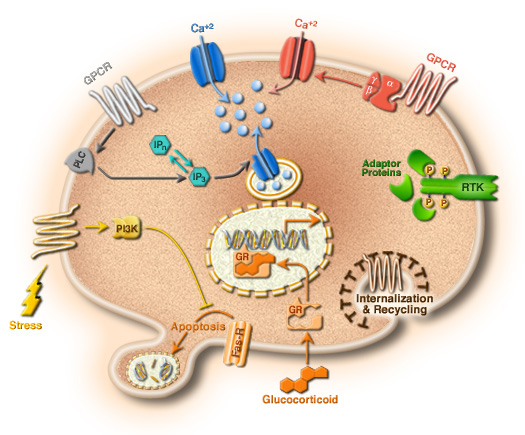 E-Cell is a software model of a biological cell. To use E-Cell (as it existed in its initial incarnation), you define a set of DNA sequences and chemical reactions, and the program iterates them over time, tracking the concentrations of different proteins and other goings-on in the cell.
E-Cell is a software model of a biological cell. To use E-Cell (as it existed in its initial incarnation), you define a set of DNA sequences and chemical reactions, and the program iterates them over time, tracking the concentrations of different proteins and other goings-on in the cell.That's very cool, but it does require you to tell it what kinds of reactions are possible, and their relative likelihoods. What you get out is concentrations, not information about individual protein molecules. That approach doesn't know the shapes of molecules, or anything detailed about how the molecules interact.
E-Cell later evolved into an umbrella project that encompasses several different simulation subprojects, all with the goal of simulating an entire biological cell. So this isn't a limitation of E-Cell per se, just that particular simulation approach.
At the extreme end, one could imagine a full-blown molecular dynamics simulation of every atom in the cell. That would be great but for two problems. First, it would require a horrendous amount of computation. Cells have something like 1015 atoms in them, and molecular dynamics simulations typically have time steps in the femtoseconds, where cellular activities frequently take place over tens of minutes.
The second problem is making sense of the forest amid the trees. You're tracking every atom, but you're really curious about membranes and DNA and mitochondria and all those interesting little structures inside the cell. The computer needs to realize that this particular collection of atoms is a ribosome in this orientation, transcribing this particular base pair and grabbing that particular amino acid. So in addition to this monstrously impossible simulation, there are some tough problems in pattern recognition.
Nevertheless I hold out hope that whole-cell simulation on a scale considerably more detailed than E-Cell is still a worthwhile goal. I suspect that there is some middle road of simulation detail. Perhaps molecules and cell structures can be represented with rigid body mechanics, with surface representations of electric charge and other attractive and repulsive forces. Some are fairly rigid, but the mooshier ones can be represented by finite element models.
Why bother with whole-cell simulation? What can it do for humanity, or for you in particular? If a half-decent simulation could run on a single desktop computer (or maybe a small number of desktop computers) it would allow large numbers of researchers and hobbyists to perform biological experiments in silico. It might advance medical science quite rapidly. It might bring about cures for diseases that are currently untreatable. At the least it would provide a lot of educational opportunities that wouldn't otherwise exist.
No comments:
Post a Comment